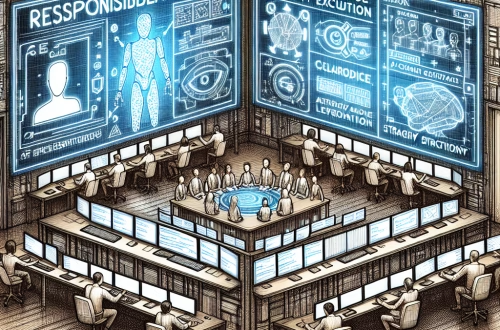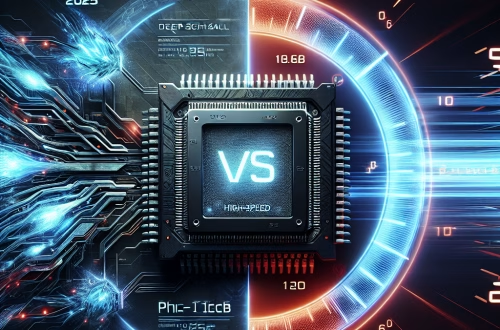DeepSeek AI 2025 Open-Weight vs Proprietary Models
Summary:
DeepSeek AI 2025 is set to introduce both open-weight and proprietary AI models, shaping the future of AI accessibility and commercialization. Open-weight models allow public access to model weights, fostering innovation and transparency, while proprietary models remain closed-source, prioritizing security and monetization. This distinction is crucial for developers, businesses, and researchers deciding between collaborative AI development and controlled, enterprise-grade solutions. Understanding these models helps users optimize AI adoption based on their needs—whether for open experimentation or proprietary deployment.
What This Means for You:
- Greater Flexibility in AI Development: Open-weight models enable developers to fine-tune and adapt AI for niche applications, while proprietary models offer plug-and-play solutions with enterprise support. If you’re a startup, open-weights could reduce costs.
- Actionable Advice for Businesses: Proprietary models may suit industries requiring data privacy (e.g., healthcare), whereas open models benefit academic research. Evaluate compliance needs before choosing.
- Future-Proofing AI Strategies: Open-weight models evolve faster due to community contributions, but proprietary models ensure stability. Diversify your AI portfolio to leverage both.
- Future Outlook or Warning: Regulatory scrutiny may increase on open-weight models due to misuse risks, while proprietary models could face antitrust concerns. Stay informed on AI policy trends.
Explained: DeepSeek AI 2025 Open-Weight vs Proprietary Models
Understanding Open-Weight vs Proprietary Models
DeepSeek AI 2025 represents a pivotal shift in AI accessibility. Open-weight models, like those from Meta’s LLaMA series, release model weights publicly, allowing developers to modify and redistribute the AI. Proprietary models, such as OpenAI’s GPT-4, keep weights private, offering API-based access with usage restrictions. The choice between them hinges on transparency, control, and commercial viability.
Strengths of Open-Weight Models
Open-weight models democratize AI by enabling:
- Customization: Researchers can fine-tune models for specific tasks (e.g., medical diagnostics).
- Cost Efficiency: No licensing fees; ideal for budget-constrained projects.
- Transparency: Auditable weights reduce “black box” concerns, critical for ethical AI.
Weaknesses of Open-Weight Models
- Security Risks: Malicious actors can exploit open weights for harmful applications.
- Fragmentation: Unregulated modifications may lead to inconsistent model performance.
- Limited Support: Lack of dedicated SLAs compared to proprietary offerings.
Strengths of Proprietary Models
- Enterprise Reliability: Guaranteed uptime, scalability, and compliance (e.g., GDPR).
- Advanced Features: Often include proprietary enhancements (e.g., multimodal capabilities).
- Monetization: Licensing generates revenue for sustained R&D.
Weaknesses of Proprietary Models
- Vendor Lock-in: Dependency on a single provider’s ecosystem.
- Opacity: Limited insight into training data or bias mitigation.
- Higher Costs: Recurring fees for API access or usage tiers.
Best Use Cases
Open-weight: Academic research, niche applications (e.g., local-language NLP), and transparency-focused projects.
Proprietary: Large-scale deployments (e.g., customer service chatbots), regulated industries, and businesses needing turnkey solutions.
Limitations to Consider
Open-weight models require technical expertise to deploy, while proprietary models may lack flexibility. Hybrid approaches, like Microsoft’s partnership with OpenAI, could emerge as a middle ground.
People Also Ask About:
- Can open-weight models compete with proprietary models in performance?
Open-weight models are closing the gap, especially with community-driven improvements. However, proprietary models often lead in benchmarking due to curated datasets and proprietary optimizations. - Are there legal risks to using open-weight AI models?
Yes. Some jurisdictions may hold users liable for misuse (e.g., deepfake generation). Always review licenses like Apache 2.0 or MIT for compliance. - How do proprietary AI models ensure data privacy?
Through encrypted APIs, strict data retention policies, and certifications like SOC 2. However, users must trust the provider’s claims without full transparency. - Will DeepSeek AI 2025’s open-weight model support commercial use?
Likely yes, but with restrictions. Most open-weight licenses permit commercial use, but redistribution rights vary. Check DeepSeek’s specific licensing terms.
Expert Opinion:
The AI industry is bifurcating into open and proprietary ecosystems, each with trade-offs. Open-weight models accelerate innovation but require robust governance to prevent abuse. Proprietary models offer stability but risk centralizing power among a few corporations. Policymakers must balance accessibility with accountability as these frameworks evolve.
Extra Information:
- DeepSeek AI Official Site – Track announcements for 2025 model releases and licensing details.
- Meta’s LLaMA – A benchmark for open-weight models, illustrating community-driven development.
Related Key Terms:
- DeepSeek AI 2025 model licensing comparison
- Open-weight AI models for commercial use
- Proprietary AI model security features
- DeepSeek AI enterprise vs community edition
- Ethical implications of open-weight AI 2025
Check out our AI Model Comparison Tool here: AI Model Comparison Tool
#DeepSeek #openweight #proprietary #models
*Featured image provided by Pixabay





